How Apple's New MacBook Stacks Up: 10 New Features
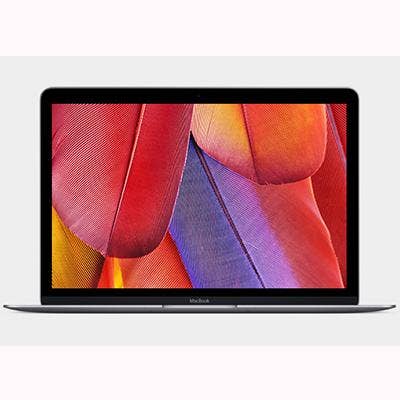
Apple's New Mysterious MacBook
Apple took the wraps off the newest addition to its notebook lineup, an ultrathin product dubbed the MacBook, during Monday's press event in San Francisco.
The MacBook joins what CEO Tim Cook praises as Apple's wildly successful laptop series, including the MacBook Air and MacBook Pro with Retina display. According to Cook, the MacBook lineup has experienced 20 percent growth despite an overall declining notebook industry.
However, the newest MacBook product represents a departure from the norm in terms of both design and functionality. Here are 10 new features in Apple's latest MacBook.
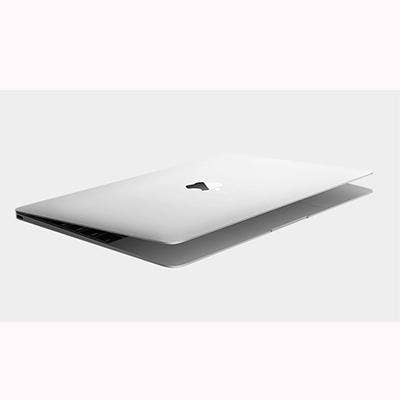
10. Slim Standards, Light Weight
The MacBook is 13.1mm thick and stands as Apple's lightest notebook at a mere 2 pounds.
That's 24 percent thinner than Apple's MacBook Air, which is about 17mm thin and weighs 2.38 pounds. Meanwhile, the MacBook Pro with Retina display is about 18mm thin and weighs 3.48 pounds.
’Apple has reinvented the notebook with the new MacBook, and at just two pounds and 13.1mm, it’s the thinnest and lightest Mac ever,’ said Philip Schiller, Apple’s senior vice president of worldwide marketing, in a release. ’Every component of the MacBook reveals a new innovation."
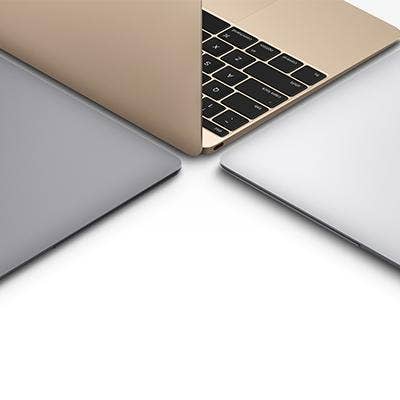
9. Innovative Display
The new MacBook has a 12-inch Retina display, with a resolution of 2,304 x 1,440, enclosed in a top casing with three available finishes -- silver, "space gray" and gold. The new device is also the first MacBook with an all-metal enclosure, according to Apple.
Meanwhile, the MacBook Air offers both an 11-inch and 13-inch LED-backlit wide-screen display, while the MacBook Pro with Retina display contains a 13-inch LED-backlit wide-screen display.
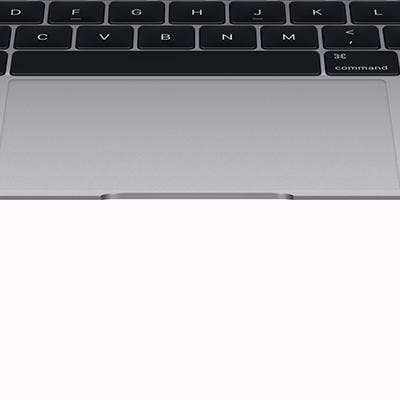
8. Force Touch
Apple's MacBook features a new Force Touch trackpad, which powers interactivity through built-in force sensors. The features allows users to click anywhere on the screen, and haptic feedback facilitates a quicker, more uniform response on the device.
Also part of Force Touch is a feature called Force Click, which allows users to press harder on their trackpad to bring up options such as looking up word definitions and glancing at file definitions.
While the MacBook Air and MacBook Pro did not previously contain this feature, Apple said Monday that the MacBook Pro with Retina display would contain Force Click.
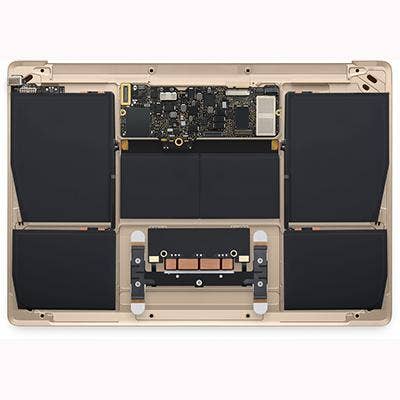
7. Processors
The new MacBook contains a new fifth-generation Intel Core M processor running on 5 watts and Intel HD Graphics 5300, according to Apple.
Apple also said during the event that its MacBook Air and MacBook Pro with Retina display products were upgraded to contain fifth-generation Intel Core processors, as well as Intel HD Graphics 6000, while both products were previously running on dual-core Intel Core i5 processors.
Meanwhile, the new device also contains 8 GB of memory and both 1.1GHz and 1.2GHz Intel Core M processor options.
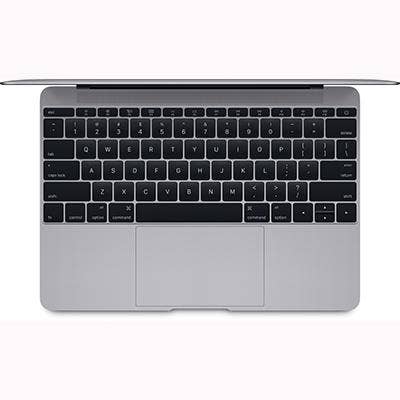
6. Reinvented Keyboard
The new MacBook comes with a new full-size keyboard that is 34 percent thinner than previous MacBook models, according to Apple.
The new MacBook keyboard utilizes a "butterfly mechanism" to ensure precision on all areas of the key, no matter where the user's finger taps. According to Apple, other traditional keyboards on the MacBook Air and MacBook Pro were based off "scissor mechanisms," which did not have as precise a result for end users.
Steel dome switches are placed under each key on the board to enhance user experiences while typing, and each key also contains its own LED backlight for brightness.

5. No Fan
Apple announced that it has removed the fan from its new notebook, which both allows for silent and efficient performance, but also creates a compact logic board and takes away bulk from the MacBook's processor.
The logic board of the MacBook is 67 percent smaller than the board of the 11-inch MacBook Air, according to Apple. In the absence of a fan, Apple CEO Tim Cook said the rest of the logic board contains compacted batteries to enhance the device's power.
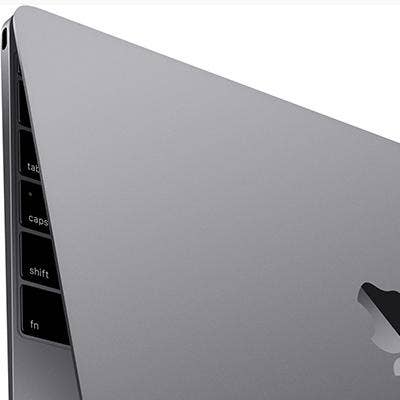
4. USB-C
Another brand-new feature of the MacBook is its support of a novel industry standard of connectivity called USB-C. USB-C is one-third smaller than normal USB ports, and supports higher-wattage charging, USB 3.1 Gen 1 data transfer and DisplayPort 1.2. The port is meant to be more user-friendly, according to Apple.
While MacBook Air and MacBook Pro did not get a USB-C port, the 11-inch and 13-inch MacBook Air did get an upgrade to support Thunderbolt 2, which delivers 20 Gbps.
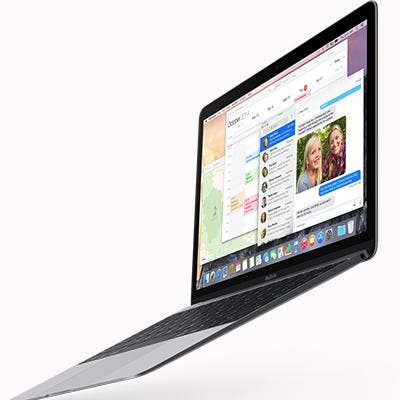
3. Operating System and Applications
Apple's new MacBook is powered by OS X Yosemite, which is a new modern version of OS X featuring Continuity, Apple's device connectivity platform. MacBook Air and MacBook Pro with Retina display also come with OS X Yosemite.
All three devices will also contain apps such as iMovie, GarageBand, Pages, Keynote and Numbers.
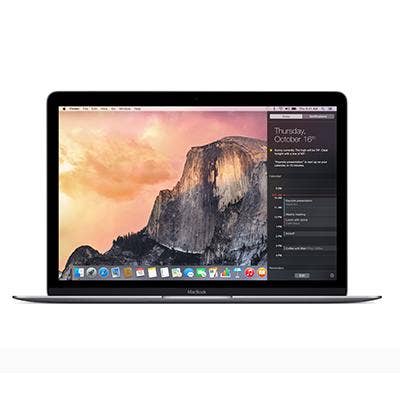
2. Battery Life
MacBook's compact logic board design was created to allow up to 25 percent more battery capacity than traditional battery cells, according to Apple. This means up to 9 hours of wireless Web browsing.
Meanwhile, the 13-inch MacBook Pro with Retina display contains up to 10 hours of wireless Web browsing. The 11-inch MacBook Air contains a built-in 38 watt-hour battery with up to 9 hours of wireless web browsing, but the 13-inch MacBook Air contains a 54 watt-hour battery powering up to 12 hours of wireless Web browsing.
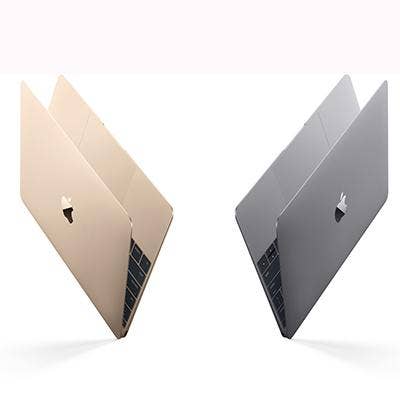
1. Pricing
According to Apple, the newest MacBook will begin shipping April 10 through Apple's online store, retail store and authorized resellers. The device will cost either $1,299 for the 1.1GHz dual-core Intel Core M processor, 256-GB flash storage model; or $1,599 for the 1.2GHz dual-core Intel Core M processor, 512-GB flash storage model.
That's a bit pricier than Apple's 11-inch MacBook Air, which costs between $899 and $1,099. The 13-inch MacBook Air costs between $999 and $1,199, and 13-inch MacBook Pro with Retina display is $1,299.